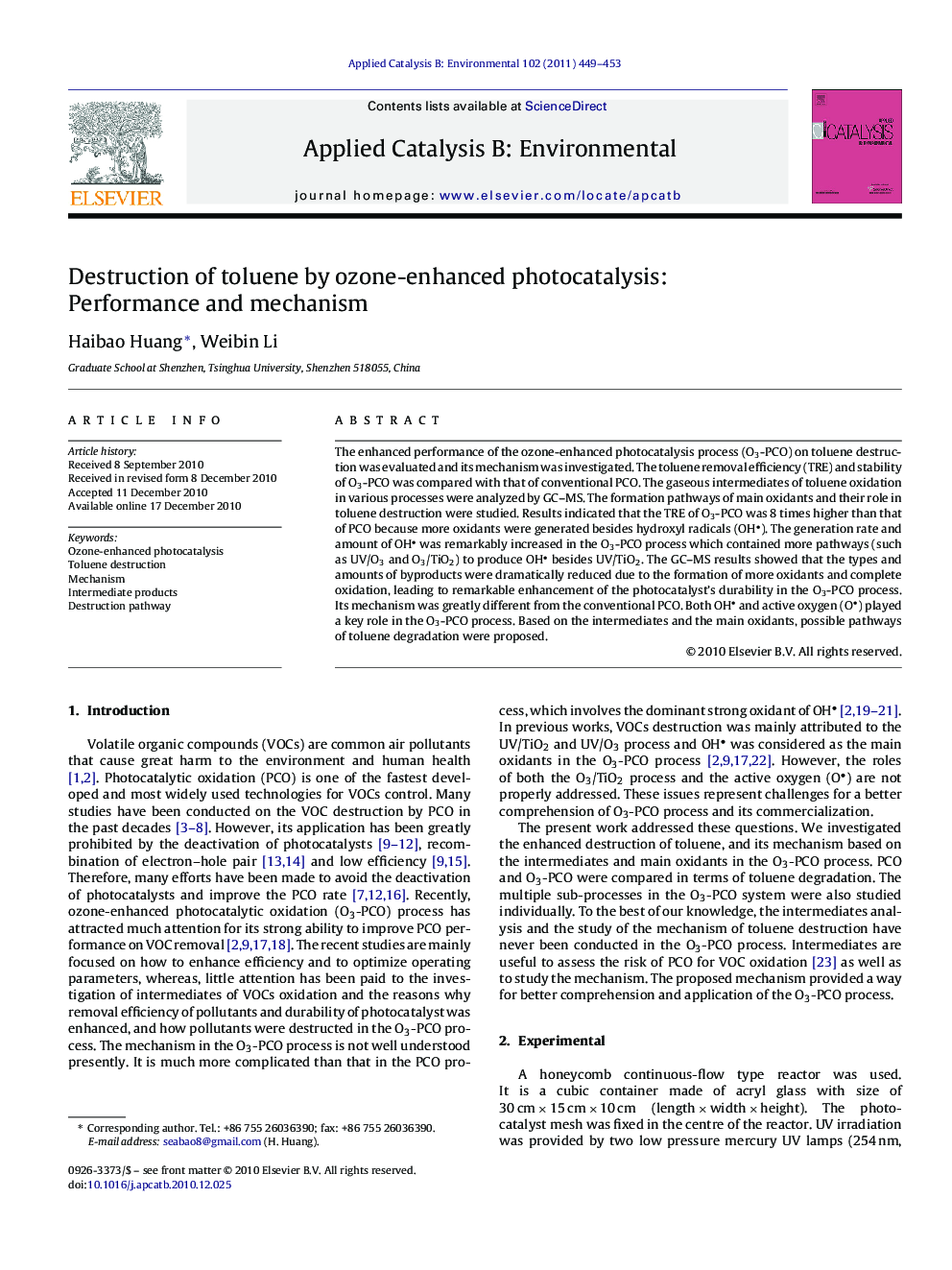| Article ID | Journal | Published Year | Pages | File Type |
|---|---|---|---|---|
| 47109 | Applied Catalysis B: Environmental | 2011 | 5 Pages |
The enhanced performance of the ozone-enhanced photocatalysis process (O3-PCO) on toluene destruction was evaluated and its mechanism was investigated. The toluene removal efficiency (TRE) and stability of O3-PCO was compared with that of conventional PCO. The gaseous intermediates of toluene oxidation in various processes were analyzed by GC–MS. The formation pathways of main oxidants and their role in toluene destruction were studied. Results indicated that the TRE of O3-PCO was 8 times higher than that of PCO because more oxidants were generated besides hydroxyl radicals (OH). The generation rate and amount of OH was remarkably increased in the O3-PCO process which contained more pathways (such as UV/O3 and O3/TiO2) to produce OH besides UV/TiO2. The GC–MS results showed that the types and amounts of byproducts were dramatically reduced due to the formation of more oxidants and complete oxidation, leading to remarkable enhancement of the photocatalyst's durability in the O3-PCO process. Its mechanism was greatly different from the conventional PCO. Both OH and active oxygen (O) played a key role in the O3-PCO process. Based on the intermediates and the main oxidants, possible pathways of toluene degradation were proposed.
Graphical abstractFigure optionsDownload full-size imageDownload as PowerPoint slideResearch highlights▶ O3 was combined with photocatalysis to enhance toluene destruction. ▶ The photocatalytic efficiency and durability was greatly improved with O3. ▶ The types and amounts of gaseous byproducts were decreased. ▶ The enhancement was attributed to more active species formed. ▶ Both OH and O were responsible for toluene oxidation.
